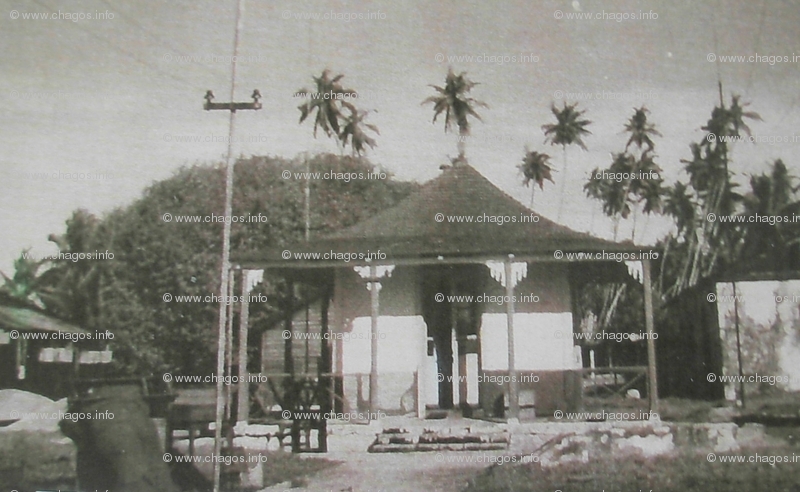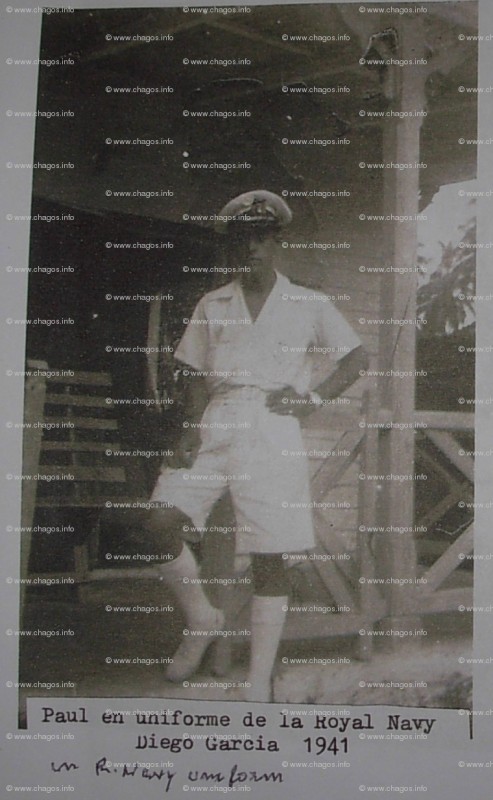Paul Caboche at Port ‘T’.
During the 1939/1945 war, Paul Caboche was posted as a Royal Navy Wireless Operator at Diego Garcia in charge of a Secret Wireless Radio Station. He stayed there for nearly two and a half years. During this time, the Diego Garcia station was referred to only as ‘Port T’.
After a short training course at the Admiralty cipher school in Vacoas, Mauritius, where Paul was born and grew up, he left his island to travel to Diego Garcia on the ‘Zambezia’ to set up a radio post there towards the end of May 1940. The purpose of the post was to keep the Mauritius naval base informed of maritime movements as well as providing daily weather reports.
Using his own amateur radio kit, he made contact with Mauritius [code name Port ‘W’] three days after his arrival. Thereafter his usual daily routine was to take down and encode weather information, make contact with the radio station at the Salomon islands [code name Port ‘2Y’] and transmit any messages to his contact in Mauritius [Volcy de Robillard] for onward transmission to the Admiralty there.
It was not until September 1941 that Paul received equipment from Singapore which enabled him to use the Navy’s radio frequencies and communicate at any hour of the day or night. Towards the end of that year a second Marconi kit arrived, along with a contingent of soldiers from the Mauritius Territorial Force who would defend the radio station in case of invasion. They were equipped with First World War weapons – .303 rifles and a Lewis machine gun.
One day a message was received that an enemy ‘Raider’ was in the area and when, a few days after that, a cruiser was spotted in the lagoon of Diego Garcia, panic ensued. Paul was on the point of destroying all his codes and radio equipment, when at last word arrived that the ship was a ‘friendly’. On another occasion, on a pitch black night, marines stationed on Diego warned Mr Caboche that a boat had landed men on the island. An anxious vigil was maintained until daylight. A lieutenant and a sergeant sent out to reconnoitre saw noone but narrowly avoided firing at each other! The next morning a visit was made to the camp of labourers working at the copra plantation who confirmed that a party of Japanese had landed. The workers had reacted by picking up their bedding and spending the night in the woods. Fortunately no further sign of a Japanese presence was spotted….
© M. Carter & P. Caboche, 2011.



